Let’s talk...
About situations and feelings: we can ask our child: Why was the frog running away?How was he feeling? What was he thinking? What helped him? What did he need to stop running?
About experiences and new places: we can ask our child: Have you ever been somewhere new? How did you feel? How did you act? What helps you overcome anxiety and face challenges?
Let's explore and enjoy...
The illustrator used collage technique in the story’s illustrations. Let’s examine the drawing sand try to spot other creatures hiding in the picture. Let’s search for them and name them.
Let's research and explore...
Two types of frogs were mentioned in the story: marsh frogs and tree frogs. What’s the difference between them? What are the characteristics of each?
Let’s explore the different stages of frog development.
We can also visit the forest, valley, or nearby public park to observe different living creatures and try to imitate their sounds.
Let's play together...
Let’s practice our frog jumps, imagining our house floor is the marsh, then build a path using pillows and rugs as stations, moving between them as frogs do in the marsh.
Every time Dad...
Every time Dad kisses his son, we see an indication of the animal whose kiss he imitates. The illustration may be of a picture on the wall or the animal may show in Dad’s clothes. We can follow these symbols of the various animals and encourage our child to find them in the book’s illustrations.
Undoubtedly the child...
Undoubtedly the child will laugh a lot if we kiss him as the father does in the book while reading it.
How does the kitten...
How does the kitten give a kiss to his parents? What do you think of the bee’s kiss? The child might enjoy experiencing different types of animals’ kisses.
The mouse’s kiss...
The mouse’s kiss has a mustache and the monkey’s kiss is jumpy and curved! The text is full of positive descriptions for kisses that can enrich the child’s fantasy, his language and his senses. It would be fun to think together of new types of kisses for different animals.
Baby Bear...
Baby Bear refuses to go to sleep and separate from his toys, as do many children, who may have an easier time going through this process with us. It is important to talk to children about the importance of getting enough sleep.
We can discuss...
We can discuss our child’s ritual for going to bed. What does he/she like – and what not? We can share with our child what helps us to fall asleep such as having a hot drink, or reading a book…
We may want...
We may want to make the kissing box for the family. Each person can kiss the box using a dark lipstick color, and let the child use the for his/her valuable things.
We look for...
We look for little rabbit’s displays of anxiety or fear in the illustrations. What do we do when we are afraid? We talk with our children about the things that may worry them and think together about ways of relief.
The wolf overcame...
The wolf overcame many obstacles to reach the house of his friend, the rabbit. We try to remember a similar experience with our children, in which they had to overcome hardships to reach a goal.
Despite the rabbits...
Despite the rabbits’ fear of the wolf, little rabbit and the wolf are friends. Do we know friends who are different?
The wolf is...
The wolf is an unexpected guest at the rabbit’s birthday party. Who may be an unexpected guest at our birthday party?
This book is...
This book is distinguished by the relation between the text and the illustrations that reflect what the child imagines in contrary to what the mother says. We can imagine additional obstacles that the wolf may encounter and overcome.
We can talk...
We can talk to our child about the book’s title: What does it mean? We can think together about other verbs that have the same meaning, such as “imagine” or “presume,” to emphasize to the child that these events are only imaginary in the mind of the little monster.
After reading the story...
After reading the story, we may wish to spend a day with the family at home or outside! Children enjoy choosing the places and activities they love, and this gives them a sense of agency and responsibility. Encourage them to get involved in the planning and preparation. Here we go!
The beautiful illustrations...
The beautiful illustrations of the book won several international awards. The illustrator was able to depict the monster beautifully (which is supposed to be frightening), and he succeeded in conveying, with small details, the atmosphere of a warm relationship between the mother and her child. We can look at the illustrations together and talk about what we like about them.
We can go...
We can go review the instructions that mother goat gave to her children (stay at home, lock the door, don’t open for strangers). We can think together of more instructions that mother goat could give to her children in order to be safe.
The mother goat...
The mother goat gave her children few signs to distinguish her. What other signs could she have given her children?
Is every stranger...
Is every stranger who knocks on our door bad like the wolf? We can have a conversation with our children concerning ways of dealing with strangers who knock on our door.
We can talk...
We can talk about the child’s experience of being alone at home (maybe with his older brother, or an adult). What does he feel? What makes him feel safe?
The kid screamed...
The kid screamed so the neighbors came running to save the others from the wolf. We can have a conversation about different situations where a child may feel in danger. What does he/she do to save himself/herself?
We can think...
We can think about our neighbors: Which neighbors can we turn to for help when we need it? How can we get help from him/her?
This story was...
This story was inspired by a traditional story. We can ask grandparents to tell the children more traditional versions of the story.
We invite you...
We invite you to act out the story with your children: one, two, three: action!
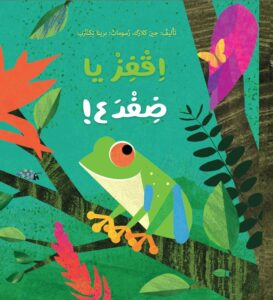 Jump, Little Frog!
Jump, Little Frog! 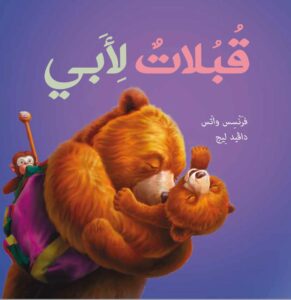 Kisses for Daddy
Kisses for Daddy 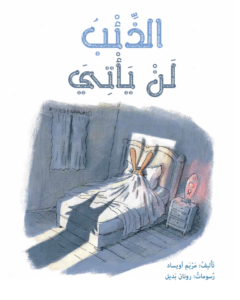 The Wolf Will Not Come
The Wolf Will Not Come 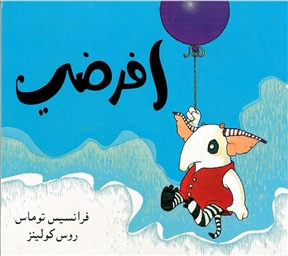 Supposing
Supposing 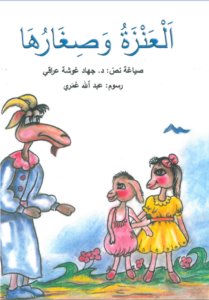 The Goat and Its Little Ones
The Goat and Its Little Ones 
